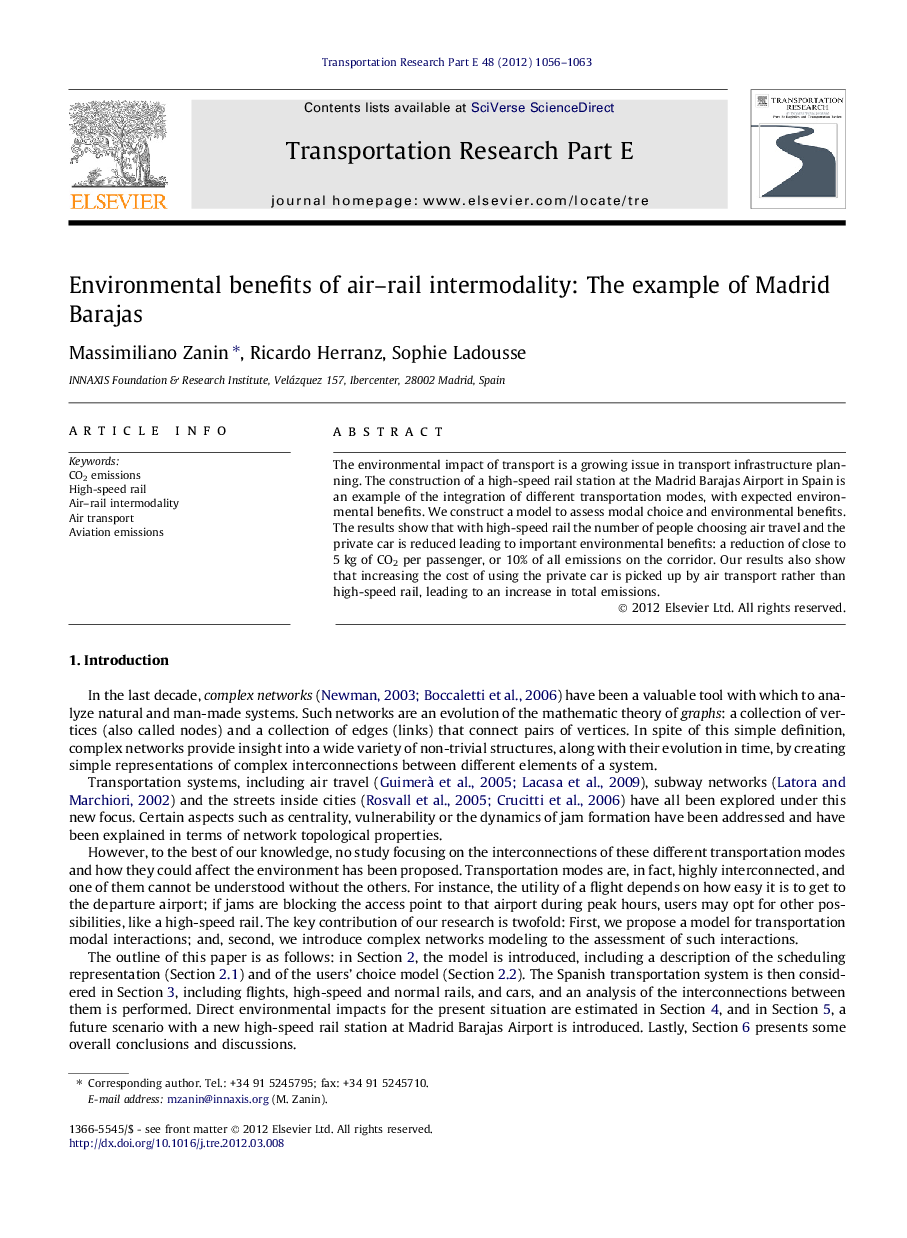| کد مقاله | کد نشریه | سال انتشار | مقاله انگلیسی | نسخه تمام متن |
|---|---|---|---|---|
| 1023522 | 941631 | 2012 | 8 صفحه PDF | دانلود رایگان |

The environmental impact of transport is a growing issue in transport infrastructure planning. The construction of a high-speed rail station at the Madrid Barajas Airport in Spain is an example of the integration of different transportation modes, with expected environmental benefits. We construct a model to assess modal choice and environmental benefits. The results show that with high-speed rail the number of people choosing air travel and the private car is reduced leading to important environmental benefits: a reduction of close to 5 kg of CO2 per passenger, or 10% of all emissions on the corridor. Our results also show that increasing the cost of using the private car is picked up by air transport rather than high-speed rail, leading to an increase in total emissions.
► We analyze the environmental impact of introducing a high-speed air–rail link in Spain.
► The results show that increased cost of using cars is picked up by air transport rather than high-speed rail.
► The results show that high-speed rail catches market share from the airlines leading to environmental benefits.
Journal: Transportation Research Part E: Logistics and Transportation Review - Volume 48, Issue 5, September 2012, Pages 1056–1063